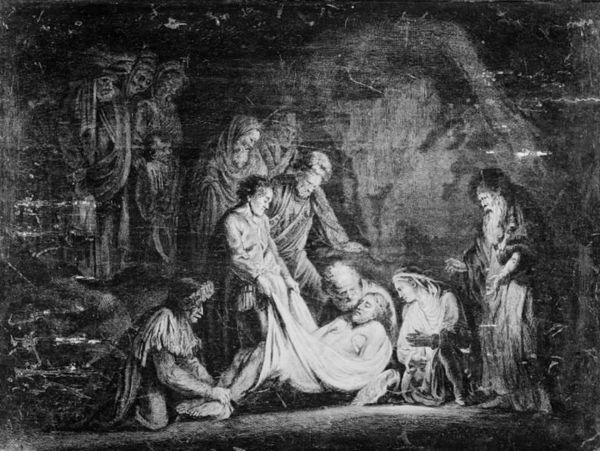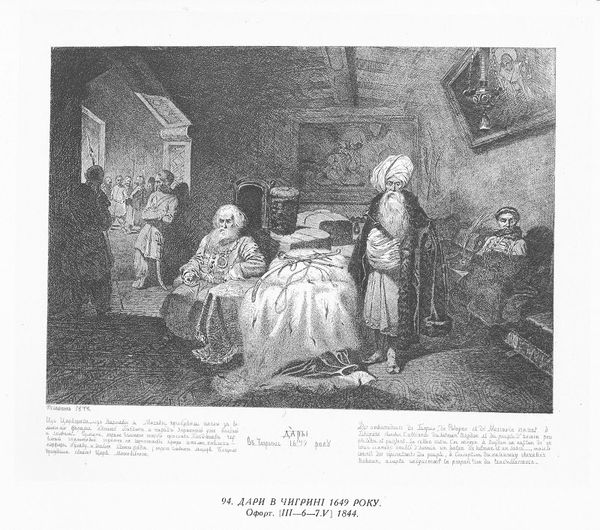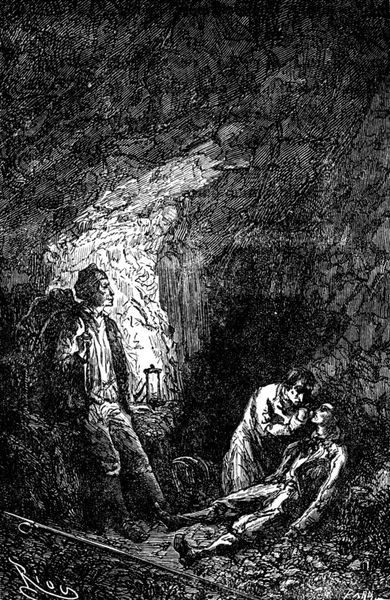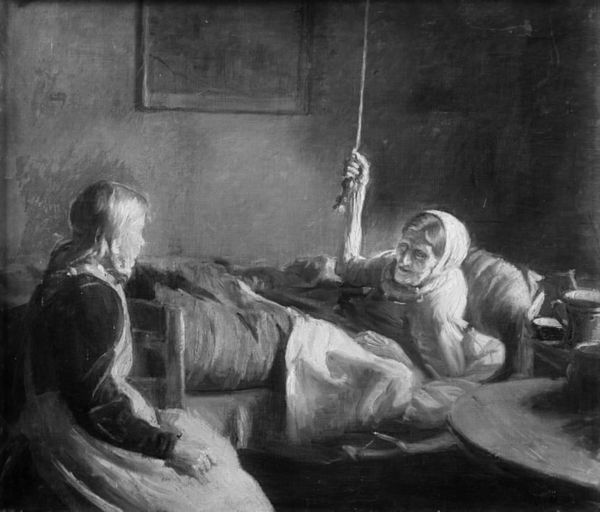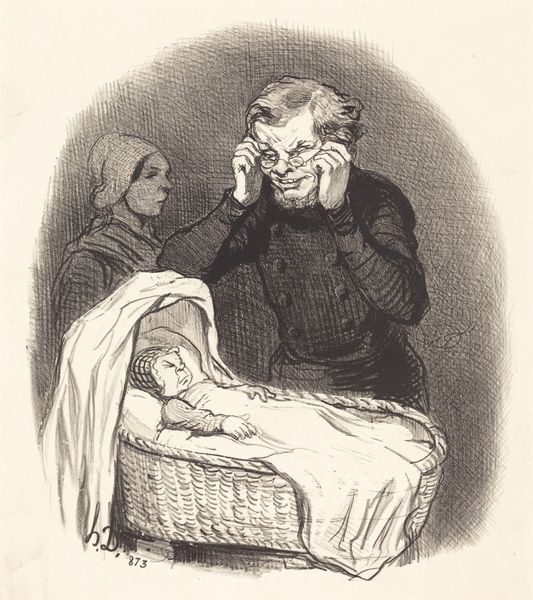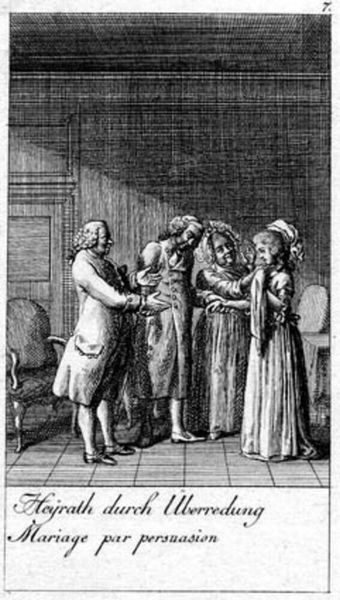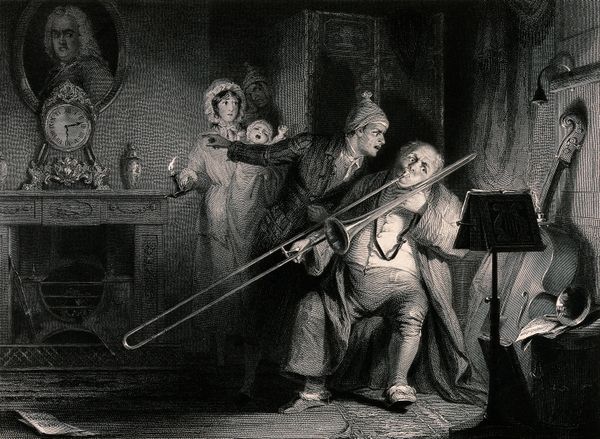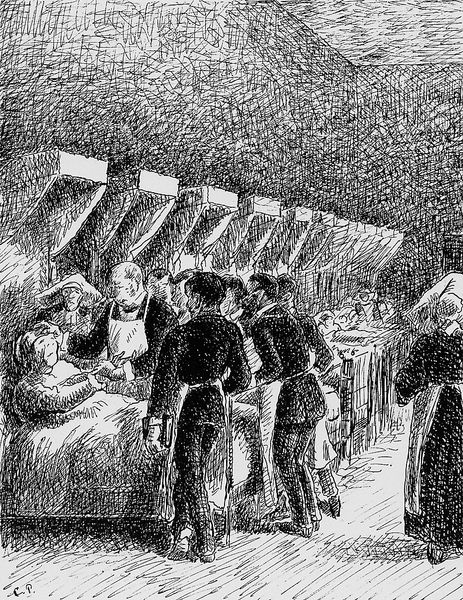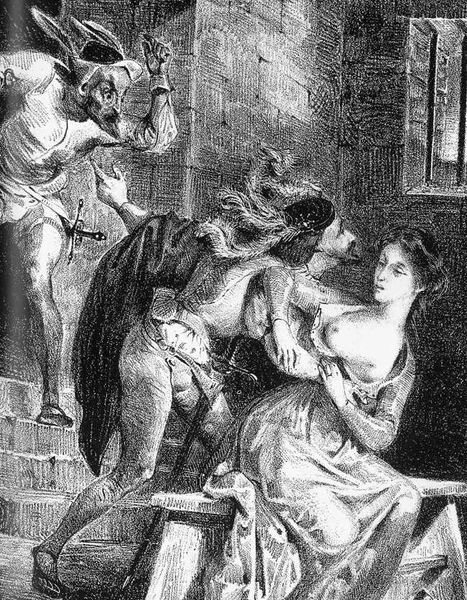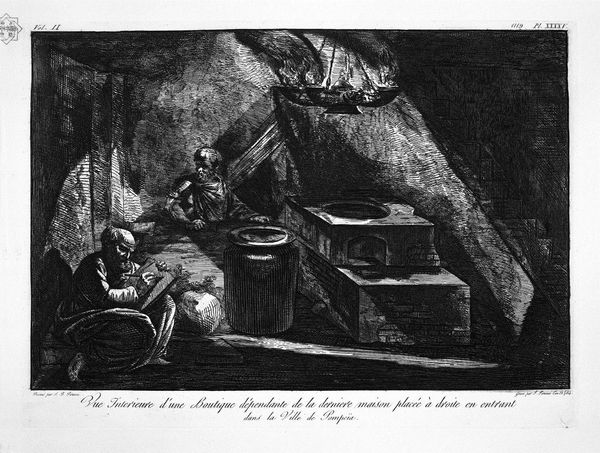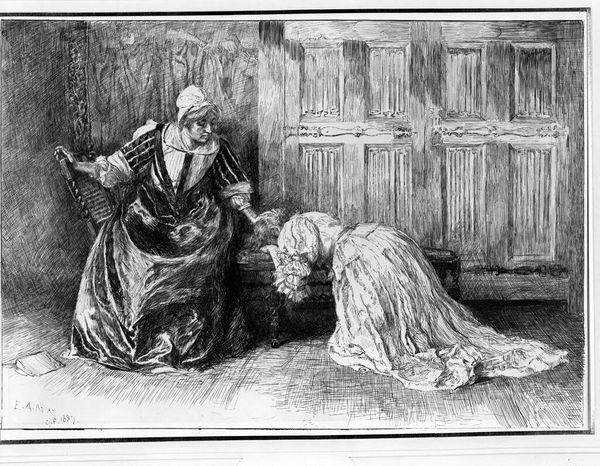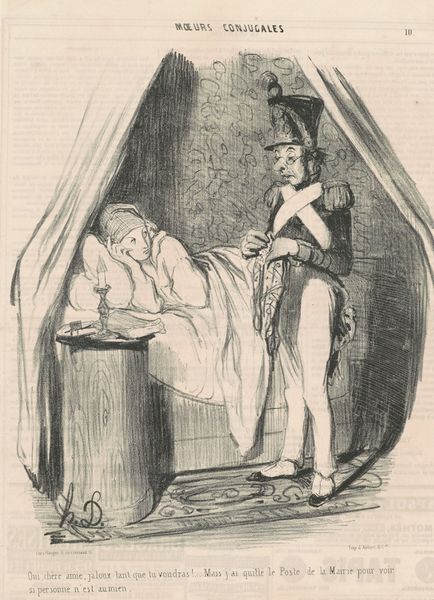
drawing, ink, pencil, pen
#
drawing
#
amateur sketch
#
fantasy concept art
#
narrative-art
#
pencil sketch
#
fantasy-art
#
figuration
#
ink
#
idea generation sketch
#
sketchwork
#
romanticism
#
pen-ink sketch
#
pencil
#
rough sketch
#
scratch sketch
#
pen
#
genre-painting
#
fantasy sketch
#
initial sketch
Copyright: Public domain
Curator: This captivating piece, “Underjordiske,” comes to us from the hand of Theodor Severin Kittelsen. Done in ink and pencil, it feels almost like a glimpse into a forgotten folktale. What's your immediate take on it? Editor: Chilling. There’s a pervasive sense of unease. The hatching gives everything a coarse, almost frantic texture. The whole scene seems cloaked in shadow, illuminated only by a small candle, emphasizing this feeling of a clandestine meeting in some backwater area of an obscure village. Curator: Absolutely. Kittelsen’s work frequently explored the darker aspects of Norwegian folklore. Given its fairy-tale moodiness and clear influence from Romanticism, it really evokes a sense of national identity that intertwines deeply with the supernatural. We can read in his work the anxieties and fascinations surrounding cultural preservation and identity in Norway. Editor: It’s fascinating how the positioning of the figures underscores a potential conflict of interest, the figures in the back watching over a swaddled babe who appears to be sleeping in a crib. We are drawn into a psychological study of paranoia from which our current political moment can glean something about a society and how the population deals with the ‘other’. I’m drawn to think about gendered dynamics, as the two primary characters at the opening look feminine. Perhaps it reflects a historical anxiety concerning women's autonomy and their reproductive power within society, don’t you agree? Curator: Indeed, and those anxieties often manifest through the demonization of midwives, and cunning folk and people who might be otherized because they practice the darker arts. Kittelsen clearly utilizes those anxieties through these uncanny looking trolls in their hideout or cave dwelling in which something, clearly not of this world, will imminently take place. Editor: I think we’re clearly directed through an exploration of the construction of monstrosity here as well. We, the audience, become implicated in this narrative by casting judgment, while also confronting our anxieties towards mortality and the unknowable facets of human existence. Curator: Yes, art offers us that uncomfortable reflection. "Underjordiske" holds up a distorted mirror, forcing us to confront our deepest fears. Editor: In the end, this is what renders "Underjordiske" eternally pertinent to debates on power, identity, and the shadowy corners of our societies. Thank you for this stimulating journey.
Comments
No comments
Be the first to comment and join the conversation on the ultimate creative platform.
